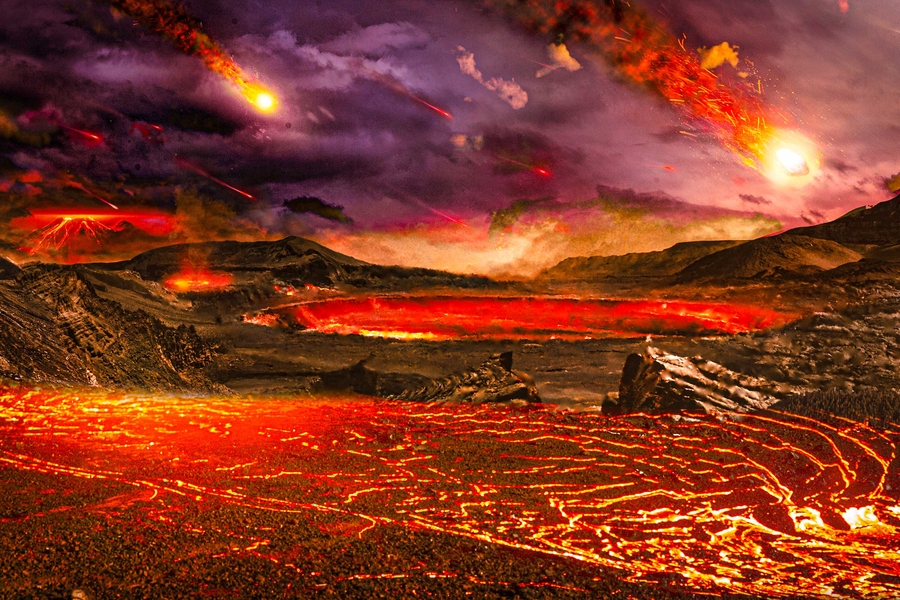**A Minor Deficiency in Potassium Is Altering Earth’s Genesis Narrative**
In a significant study released in *Nature Geosciences*, a team from MIT has identified a slight shortfall of potassium-40 (40K) in certain of Earth’s ancient and profound rocks. This discovery implies the existence of preserved remnants from the 4.5-billion-year-old proto Earth, challenging long-standing beliefs surrounding our planet’s genesis.
For many years, researchers thought that the Moon-forming collision with a Mars-sized object melted and thoroughly blended Earth, erasing any primordial signs. Nonetheless, the updated potassium findings suggest that some ancient mantle regions have endured and continue to emerge at the surface via contemporary hotspot volcanism. This advance sharpens our comprehension of Earth’s foundational elements and the makeup of the inner solar system.
Guided by MIT geochemist Nicole Nie, the group included partners from Chengdu University of Technology, Carnegie Science, ETH Zürich, and Scripps. They investigated Archean basalts from Greenland and Canada, in addition to fresh lavas from Hawaii and La Réunion, which access mantle plumes. Employing thermal ionization mass spectrometry, they uncovered an average 40K deficiency of roughly 65 parts per million in specific ancient rocks and select recent ocean-island basalts. Most other terrestrial substances did not exhibit this shortfall, and the trend contradicted subsequent geological activities, indicating the endurance of proto Earth materials.
To probe origins, the researchers simulated how a proto Earth with this 40K deficiency would develop after a collision. The results reveal that late accretion of less than 0.5% of Earth’s mass could not drastically alter potassium isotopes. However, incorporating between 9 to 12% of impactor material during the colossal impact aligns the modeled mantle with current compositions while preserving isolated pockets containing the ancient deficit. These pockets are likely present in deep mantle structures accessed by plume volcanism.
This study aligns with previous discoveries of anomalies in mass-independent isotopes such as ruthenium-100, hinting at pre-impact reservoirs. Potassium, a lithophile element, traces the accreting Earth through phases inaccessible to siderophile elements like ruthenium, demonstrating that a substantial part of Earth’s potassium originated from the impactor.
The broader significance of this research indicates that the current meteorite record may not completely represent Earth’s foundational materials. The 40K-deficient endmember is not present among cataloged meteorites, pointing to absent or now-extinct parent bodies. This prompts planetary scientists to reevaluate assumptions regarding the formation of the inner solar system and the distribution of volatile elements.
Practically, this discovery introduces a new indicator for identifying untouched mantle regions and refining mass balance assessments for the Moon-forming event. It also recontextualizes considerations of hotspot chemistry, suggesting that certain plume sources harbor remnants of the proto Earth, functioning as time capsules from a past world.
While the anomaly is minor, necessitating exact measurements and validation, it bolsters the argument for proto Earth’s preservation. If further validated, the subtle signal from potassium-40 could establish new limits on giant-impact models, providing insights into the dynamics of the collision and the degree of blending within Earth’s mantle.
**Interpretation of the Potassium Signal**
The negative 40K anomaly indicates that Earth’s foundational components differ from identified meteorite categories. Modelling indicates that late accretion alone fails to explain the anomaly, but incorporating approximately 9 to 12% impactor mass does. The anomaly’s durability suggests long-lasting deep reservoirs that escape complete mantle mixing, in line with plume source areas.
**Future Examination Areas**
Upcoming targets comprise other Archean cratons with minimally modified mafic units, additional hotspot chains featuring high helium ratios, and deeply drilled Hawaiian glasses. Cross-referencing with alternative isotopic systems, such as ruthenium and molybdenum, could illustrate the extent and interconnections of primordial domains.
Researchers and interested individuals can access the complete study via the provided link to delve deeper into these groundbreaking discoveries and their implications for understanding Earth’s intricate history and formation.
